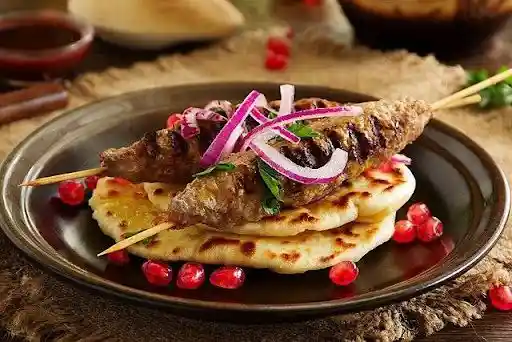Origin of Desi Kebab
India has an enthusiastic fan club for its traditions and food culture. Indian cuisine involves the usage of various spices and ingredients in ways that enhance taste and moods. Indian cuisine is majorly divided into North Indian and South Indian and is further classified as Awadhi cuisine, Punjabi cuisine, Rajasthani cuisine, Chettinad cuisine, and so on. One such example is the Kebab, which originated in the Middle Eastern Countries.

Source: Wiki commons
The word Kebab is of Turkish and Arab origin. In spite of its mouth-watering spiciness, it does not involve challenging cooking as it involves a simple process of roasting a piece of meat on the fire. Kebab simply means roasted meat, done predominantly by hunters, who would roast the hunted animals on fire by skewering them on the tip of their swords.
In India, kebabs can be traced back as far as the Dwapara Yuga, the Mahabharata has some mention of roasting meat on fire.
Yet, the Kebab in today’s kitchen is based on Middle Eastern traditions, brought to India by both friends and foes. Though it began with the Afghans, it was the Mughals who developed it into a delicatessen that was tender and succulent; enhanced and made rich by flavourful spices and dry fruits. The Mughal influence in making kebab’s an Indian staple is evidenced by their prominence in Awadhi cuisine (the cuisine of modern-day Lucknow, a region under Mughal rule during the 16th century).
But since then, kebabs have evolved beyond the use of meat, itself; with scrumptious varieties of Hariali Kebab, Paneer Tikka, and Dahi Ke Kebab. There are around 120 vegetarian and more than a thousand non-vegetarian varieties of kebabs in India. Tunday, Galawati, Bihari, Kakori, Chapli, Kalmi, Reshmi, Shami, and Sheek are the most popular.
The Kebab has become popular all over the world, each place has its own version. Greece, China, Bulgaria, Armenia, and Jordan all have their own kebab traditions. Other Indian variants include the use of the Tawa, instead of open fires. There was also the emergence of new items on the menu like Tandoori chicken and chicken tikka- born out of the Peshawari tradition (modern-day Punjab). Kebabs can also be served as a snack eaten with Chapati, Naan, Roti, and so on. As mentioned earlier, Kebab can be made into unbelievable varieties with different combinations. Among them, There are many interesting stories behind the birth of each variety of Kebab, the Galawati kebab was first prepared for the toothless Nawab, Tunda Kebab was found and named after the one-armed chef and many more. No matter the origin of the Kebab, it is a celebrated testament to Indian flavor, culture, and innovation.

Source: Wiki commons


